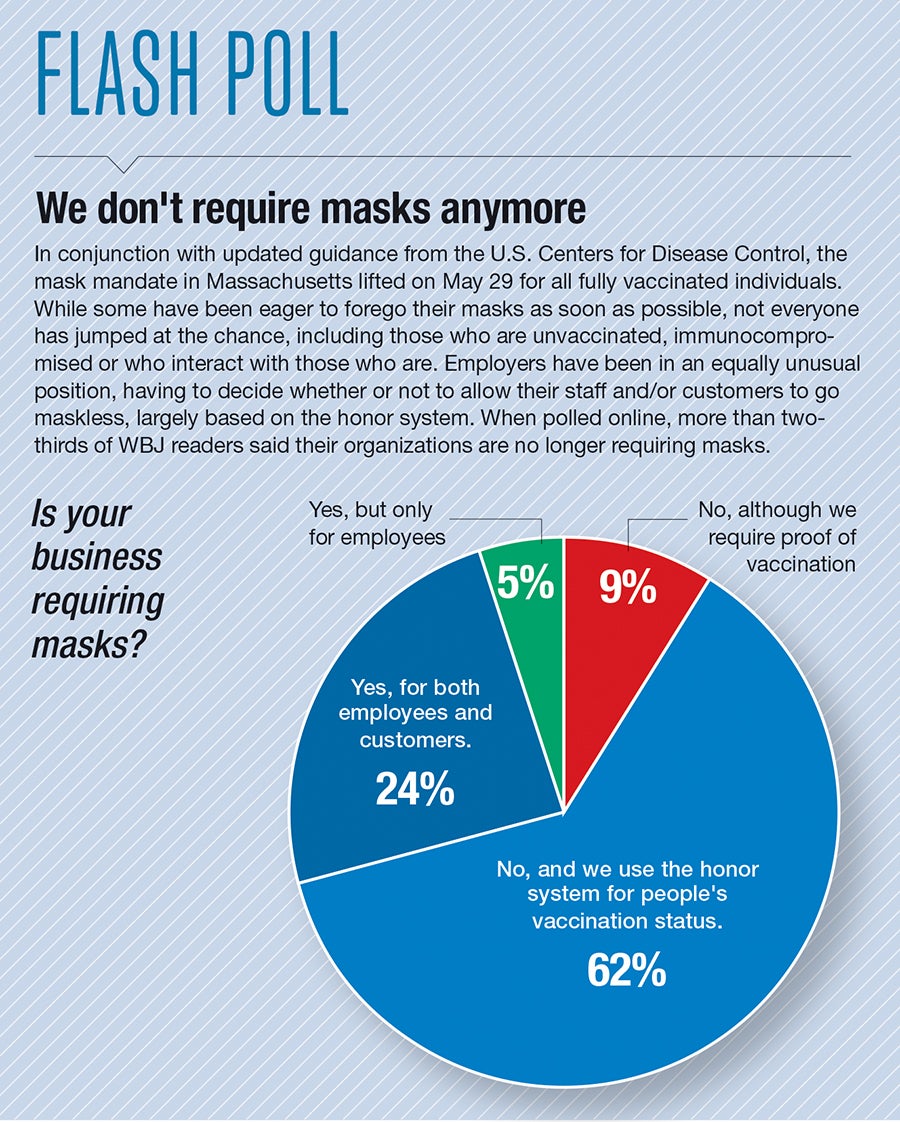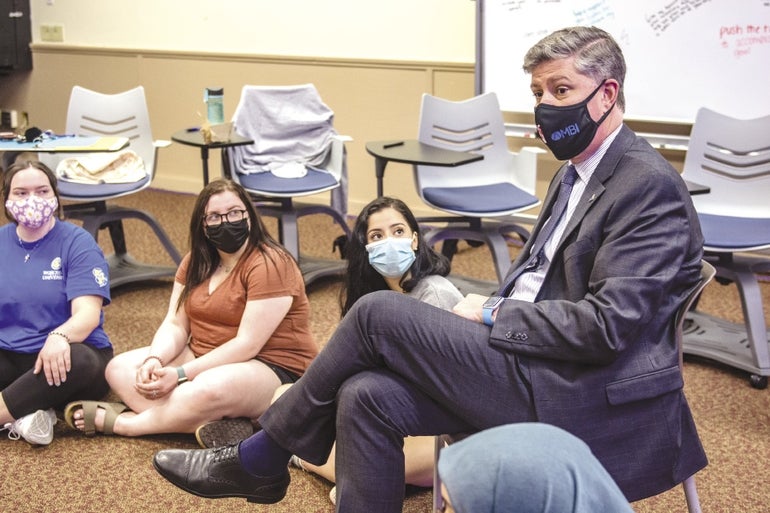A year of pandemic learning has emphasized key issues that existed before the pandemic and induced efforts to provide resources to these key areas.
Get Instant Access to This Article
Subscribe to Worcester Business Journal and get immediate access to all of our subscriber-only content and much more.
- Critical Central Massachusetts business news updated daily.
- Immediate access to all subscriber-only content on our website.
- Bi-weekly print or digital editions of our award-winning publication.
- Special bonus issues like the WBJ Book of Lists.
- Exclusive ticket prize draws for our in-person events.
Click here to purchase a paywall bypass link for this article.
As Worcester universities wrap up this school year and prepare for the next, administrations are examining how the coronavirus has changed higher education and are shifting resources to support students.
After a 2020-2021 school year split between remote and hybrid learning, Central Massachusetts colleges and universities are returning to in-person learning for the fall semester, citing falling case numbers and rising vaccination rates.
“The vaccination rate in the commonwealth is certainly encouraging and motivating us to bring back as many in person activities both in and outside of the classroom,” said Barry Maloney, president of Worcester State University. “We’re requiring students to get vaccinated and a significant portion of our employees indicated interest in vaccination when surveyed, which gives me hope that we’ll exceed the 80% vaccination rate benchmark that we set for ourselves as a good standard to keep our campus safe.”
Ultimately, a year of pandemic learning has emphasized key issues that existed before the pandemic – mental health, learning flexibility, and transitioning from high school to higher education – and induced efforts to provide resources to these key areas.
“One lesson learned is the importance of in-person learning – of faculty and students being together,” said Jack Foley, vice president of government and community affairs at Clark University in Worcester. “From a mental health point of view, we’ve really seen that.”
The resumption of a normal fall semester comes as colleges and universities are finding ways to once again provide a typical college experience for their students, following a year in which enrollments dropped up to 15% in Central Massachusetts, including more than 25% for first-year students at places like Mount Wachusett Community College in Gardner, according to the Massachusetts Board of Higher Education.
Enrollment statistics reflected the change in learning models and the economic uncertainty felt by students. Nationally, higher education saw undergraduate enrollment down 4% in the 2020 semester compared to the previous 2019 one, according to the National Student Clearinghouse Research Center. Enrollment for first-year students specifically dropped 16.1%. The resumption of typical on-campus activities and reopening of the state may prompt lower enrollment statistics to be a one-year dip rather than a catalyst of a longer trend.
“Some campuses are up in terms of enrollment” for the upcoming semester, said Jeanine Belcastro Went, executive director of the Higher Education Consortium of Central Massachusetts in an email. “There are many college-bound high school seniors who are eager to experience campus life and be in-person, especially after a senior year that was likely mostly online, and absent a lot of typical senior rights of passage.”
Helping freshmen transition to college
While universities prepare for a mostly normal school year, the pandemic’s effect on high school students who are entering postsecondary studies remains unclear.
“We have to pay closer attention to student needs and make sure students are transitioning from high school to college in a way that is seamless and consistent,” said Maloney. “We’re going to spend a lot of time advising students and tracking progress.”
Many school districts, Worcester included, were primarily online then transitioned to a hybrid format as the previous school year progressed. For Worcester universities, the local education system pipeline provides an opportunity to assess trends and challenges for the entering freshman class.
“We’ve been talking a lot with school districts about where things currently stand and how students are progressing in their academic courses,” said Maloney. “As a result, we’re preparing additional steps to support students in a stepped up effort for academic advising, reaching out during the summer to provide these students with support.”

Anna Maria College in Paxton plans to provide incoming students with a preparatory class focusing on academic skills to ease their transition.
“It’s a one-credit course to make sure they feel confident in academic rigour and the demands they’re going to face because it was so disruptive in their senior year,” said Mary Lou Retelle, president of Anna Maria. “Many of them are feeling a bit insecure in their preparation and our faculty and tutoring center recognize that. It’s going to be a common problem on all college campuses.”
For both incoming and returning students, the isolation from their peers presented both an academic and mental challenge. Now that activities are increasingly in person, a consideration is the potential strain on mental health in adapting to crowds after a year of isolation.
“Student mental health was an issue heading into the pandemic, and certainly COVID has only amplified that,” said Maloney. “All of us have to acknowledge that when we get back together again in great numbers even as professionals, it will be different. We’ve got to be prepared to support making sure people are still mentally doing well and staying healthy.”
New ways to teach
The learning climate of the pandemic prompted adaptive approaches to higher education, challenging established teaching conventions. With online learning now increasingly an option rather than necessity, educators are considering what benefits resulted from the experience, like reduced travel time between classes or greater flexibility for different learning styles.
“We’ve been able to adapt pretty quickly in higher education to remote learning and using technology. We will likely be able to use technology in the future to greater benefit,” said Foley.
For certain programs like nursing, where hands-on experience is required for accreditation, the pandemic generated difficulties in completing the necessary clinical hours to fulfill graduation requirements.
“Clinical sites and internships were difficult to do during the pandemic due to restrictions, and we just don’t know when this will happen again,” said Retelle. “So we’re looking at simulations and other programs they can do on campus to help them get that type of learning experience without having to be off-site. We still need to prepare for that type of situation to be able to pivot quickly.”

